ASTANA – The visit of the United Nations Educational, Scientific and Cultural Organization (UNESCO) Director General Audrey Azoulay to Kazakhstan on June 7-9 marked a significant milestone in the country’s collaboration with the organization, President Kassym-Jomart Tokayev said at the recent meeting of the National Kuryltai in Turkestan.
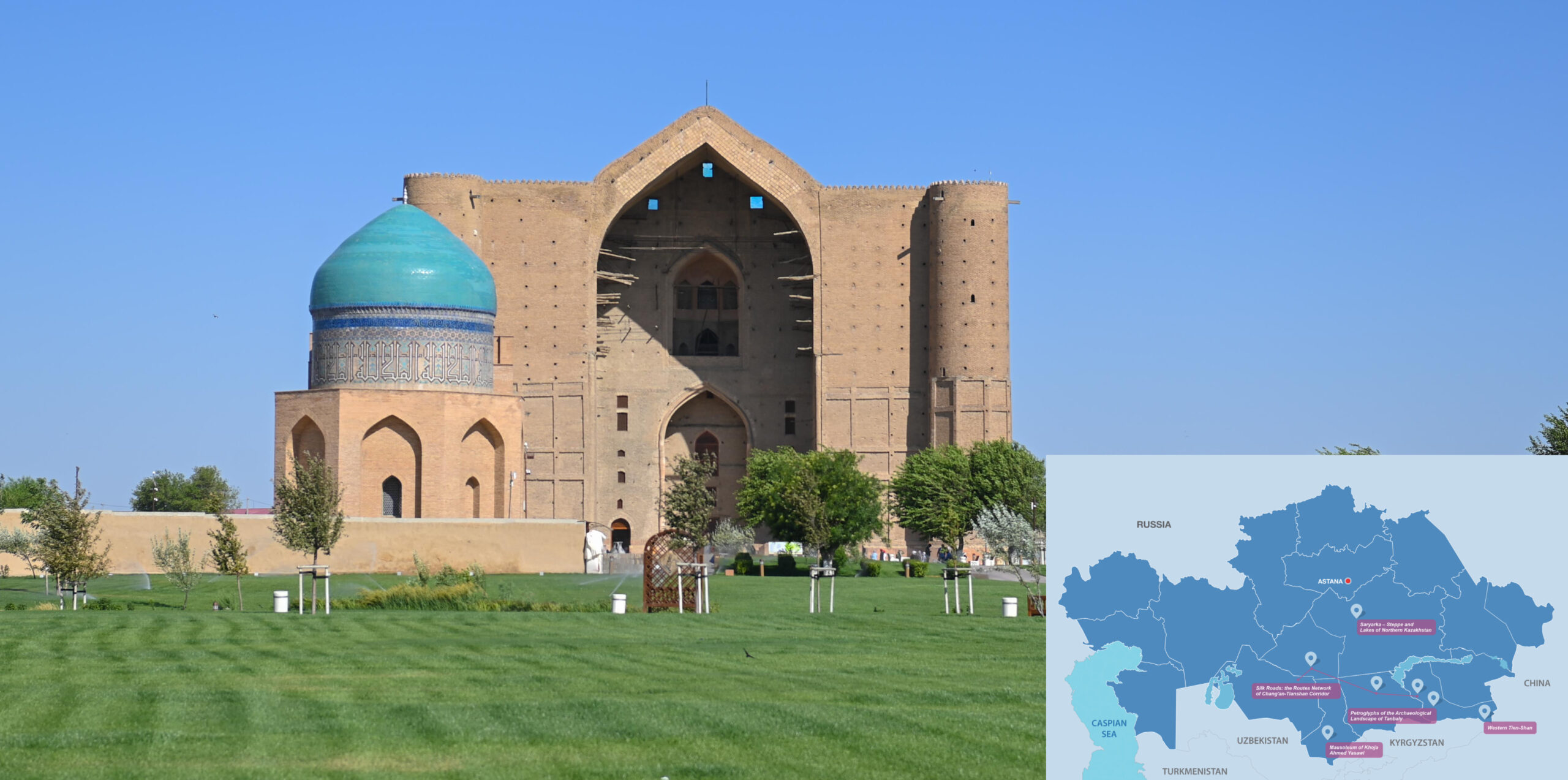
The mausoleum of Khoja Ahmed Yassawi, located in Turkistan, was built at the time of Timur (Tamerlane), from 1389 to 1405. Photo credit: Akorda press service. Click to see the map in full size. The map is designed by The Astana Times.
“Recently, at my invitation, the Director General of UNESCO, Ms. Audrey Azoulay, visited Kazakhstan. She specifically visited the city of Turkestan. This visit of the head of an influential international organization to our country was the first in the past ten years. I held a separate meeting with Ms. Azoulay, during which she presented me with confirmation certificates for the inclusion on the UNESCO list of the Burabay and Markakol natural reserves, as well as the Orteke musical and puppet art,” commented Tokayev on Azoulay’s visit.
“Undoubtedly, this [inclusion of Kazakhstan’s sites on the UNESCO list] will make a significant contribution to the worldwide promotion of the natural and cultural heritage of Kazakhstan. It is necessary to continue the work to include our unique traditions and sites in the list of intangible cultural heritage,” Tokayev told the Kuryltai.
The decision to include the Burabay National Park in the Akmola Region and the Markakol state nature reserve in the East Kazakhstan Region in the UNESCO World Network of Biosphere Reserves was announced at the 34th session of the International Coordinating Council of the UNESCO Man and the Biosphere Program on June 13-17, 2022 in Paris.
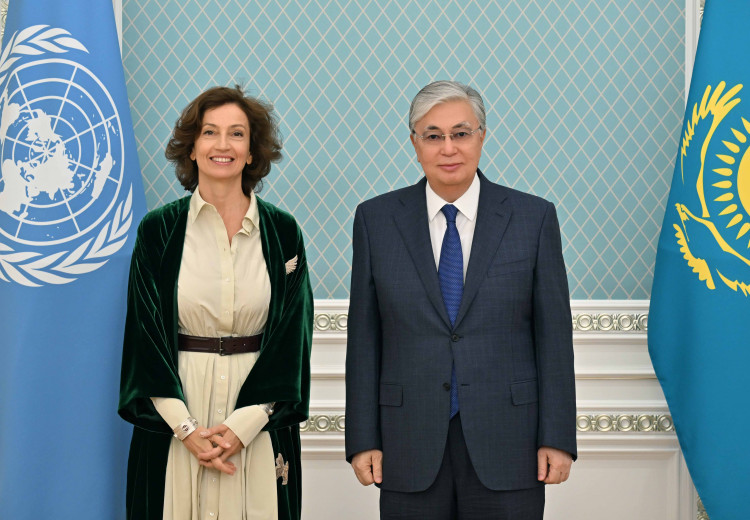
Audrey Azoulay and President Tokayev during their meeting on June 7 in Astana. Photo credit: Akorda press service.
To date, the national network of UNESCO biosphere reserves in Kazakhstan includes 15 natural reserves, the highest number among the countries of Central Asia. There are 748 biosphere reserves in 134 countries, including 23 transboundary sites.
Orteke, a traditional Kazakh performing art that combines theater, music and puppetry, was also included in 2022 on the Representative List of the Intangible Cultural Heritage of Humanity during the 17th session of the Intergovernmental Committee for the Safeguarding of the Intangible Cultural Heritage in Rabat, Morocco.
UNESCO has previously recognized the contributions of Kazakh traditions, such as the art of dombra playing, the ancient practice of eagle hunting and the national togyzkumalak board game. These unique cultural practices have found their rightful place among the intangible cultural heritage.
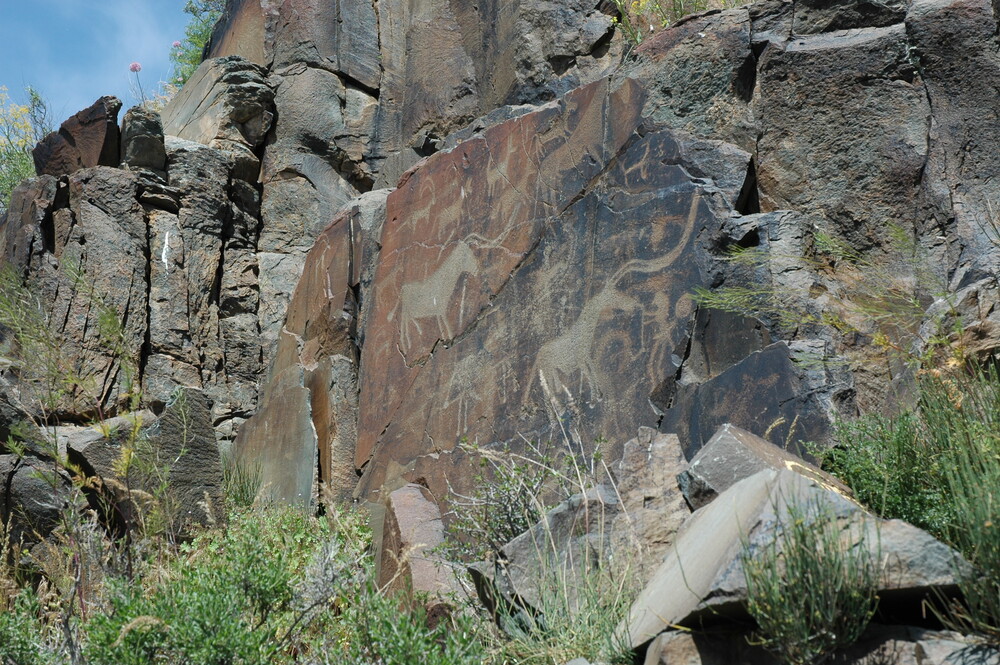
Dating back to the Bronze Age and the early Iron Age, Tamgaly petroglyphs depict a variety of figures, including humans, animals, and symbols. The site is considered a valuable archaeological and cultural heritage, offering insights into the lives and beli.
“Kazakh culture is multifaceted. We have inherited a huge legacy from our ancestors, which we need to consistently modernize and promote all over the world,” said Tokayev at the National Kuryltai.
Beyond its vibrant traditions, Kazakhstan boasts stunning natural and architectural wonders that UNESCO has acknowledged by granting them World Heritage status.
One such awe-inspiring site is the Khoja Ahmed Yassawi mausoleum in Turkestan, an architectural masterpiece dating back to the 14th century. The mausoleum, which Azoulay visited as part of her recent trip to Kazakhstan, has been part of the UNESCO World Heritage List since 2003, in addition to four other sites from the country, including the Tamgaly petroglyphs, the Saryarka steppe, and lakes in northern Kazakhstan.
“A proposal has been made to give this site [Khoja Ahmed Yassawi mausoleum] the status of a national historical and cultural monument. I support this initiative,” said Tokayev.
Kazakhstan is working with neighboring countries on a transnational application to include several other sites on the UNESCO World Heritage List.
UNESCO’s increased investment in Central Asia
Besides Kazakhstan, Azoulay also visited the Kyrgyz Republic. During her visit to Central Asia, she called for stronger regional and multilateral cooperation in glacier protection and water management. She also announced new UNESCO investments in scientific cooperation in Central Asia.
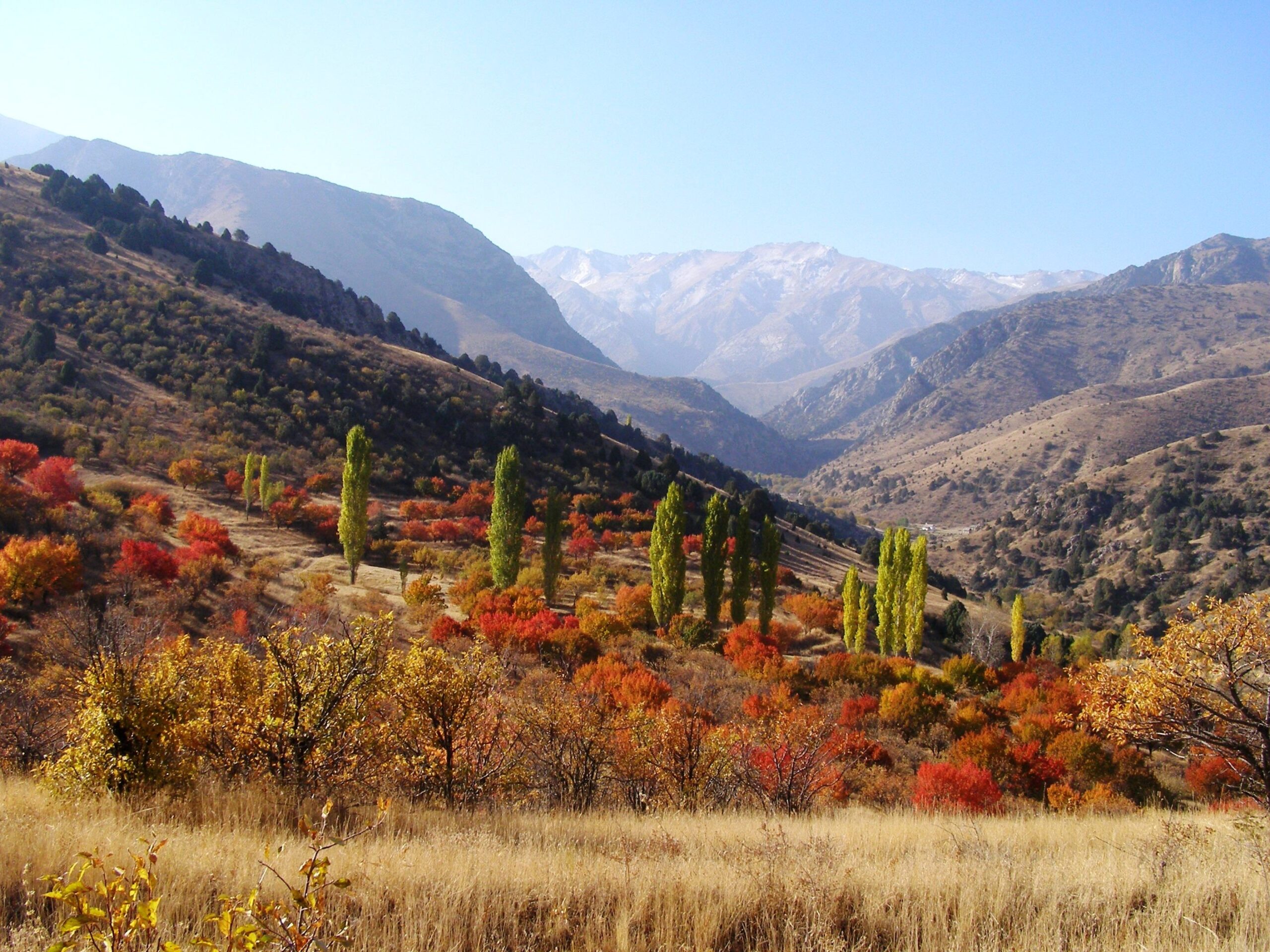
Western Tien-Shan is a transnational property located in the Tien-Shan mountain system. Sayram-Ugam national nature park depicted on the photo is part of the area located in Kazakhstan. Photo credit: Kenbay T./UNESCO.
Since 2017, Almaty has been home to a UNESCO regional research center specializing in glaciology. This center brings together approximately 20 international researchers across four thematic laboratories: cryosphere monitoring, snow and ice resource monitoring, geocryology, and natural hazards.
“I believe this example shows that working at the regional and multilateral levels is both relevant because of the nature of the issue. It is essential if we are to serve the general interests of the population,” Azoulay said in her remarks at the AIF plenary session.
She also highlighted the importance of scientific diplomacy and cooperation in addressing the problem of water, emphasizing that world peace depends on water.
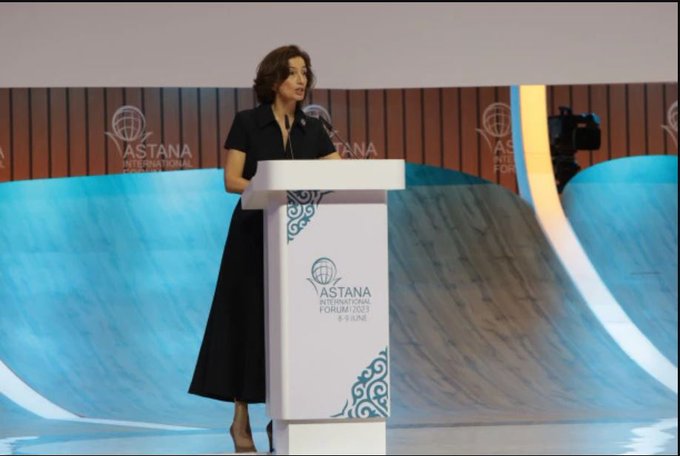
Azoulay addresses the Astana International Forum. Photo credit: Azoulay’s Twitter account.
“In this region, glaciers shrank 30% over the past 50 years due to climate disruptions. It happens here in Central Asia and it happens everywhere in the world. (…) When glaciers melt, they take with them entire ecosystems and significantly increase the risk of natural disasters. This also threatens to deprive a large part of the world’s population of their means of subsistence,” she said.
Fifty UNESCO World Heritage sites are home to nearly 18,600 glaciers, representing almost 10% of the world’s glaciers. A 2022 study by UNESCO and the International Union for Conservation of Nature showed that glaciers in a third of the sites are set to disappear by 2050 due to accelerated melting.
In 2021, UNESCO initiated a new regional scientific program, funded with over $6 million from the Adaptation Fund, to conduct glacier mapping in Central Asia. The program aims to establish a glacier melt-risk warning and preparedness system for Kazakhstan, the Kyrgyz Republic, Tajikistan, and Uzbekistan by 2025.
Among other measures, UNESCO plans to map the most vulnerable areas to implement early warning systems for populations at high risk of natural disasters, particularly glacial lake outbursts.


